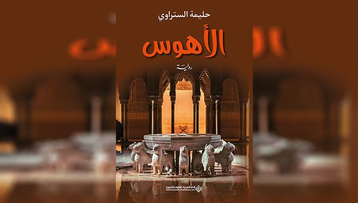-
Egypt: Hidden corridor in Great Pyramid of Giza seen for first time

Egyptian antiquities officials say they have confirmed the existence of a hidden internal corridor above the main entrance of the Great Pyramid of Giza.
Video from an endoscope showed the inside of the corridor, which is 9m (30ft) long and 2.1m (7ft) wide.
The officials say it could have been created to redistribute the pyramid's weight around the entrance or another as yet undiscovered chamber.
It was first detected in 2016 using an imaging technique called muography.
A team of scientists from the ScanPyramids Project were able to sense density changes inside the pyramid by analysing how it was penetrated by muons, which are by-products of cosmic rays that are only partially absorbed by stone.
The non-invasive technique detected an empty space behind the northern face of the Great Pyramid, about 7m above the main entrance, in an area where there is a stone chevron structure.
Further tests were carried out with radar and ultrasound before a 6mm-wide (0.24in) endoscope was fed through a tiny joint in-between the stones that make up the chevrons.
The footage from the camera was unveiled at a news conference beside the pyramid on Thursday. It showed an empty corridor with walls made out of roughly-hewn stone blocks and a vaulted stone ceiling.
"We're going to continue our scanning so we will see what we can do... to figure out what we can find out beneath it, or just by the end of this corridor," said Mostafa Waziri, head of Egypt's Supreme Council of Antiquities.
The Great Pyramid, which is 146m high, was built on the Giza plateau during the fourth dynasty by the pharaoh Khufu, or Cheops, who reigned from around 2609BC to 2584BC.
Despite being one of the oldest and largest monuments on Earth, there is no consensus about how it was built.
Egyptian archaeologist Zahi Hawass said the corridor represented a "major discovery" that would "enter houses and homes of people all over the world for the first time".
He also said that it might help reveal whether the burial chamber of King Khufu still existed inside the pyramid.
He speculated that there might be "something important" in the space below the corridor, then added: "I'm sure in a few months from now we can see if what I'm saying is correct or not."
BY: bbc
Tags
You May Also Like
Popular Posts
Caricature
BENEFIT Sponsors Gulf Uni...
- April 17, 2025
BENEFIT, the Kingdom’s innovator and leading company in Fintech and electronic financial transactions service, has announced its sponsorship of the “Innovation and Sustainable Technology Solutions Competition (GU - IST Solutions), hosted by Gulf University at its main campus.
This strategic sponsorship reflects BENEFIT’s active role in advancing technological innovation and fostering sustainable solutions to future challenges. It also seeks to empower Bahraini youth by enhancing their skills, capabilities, and competitiveness in innovation and solution development—contributing meaningfully to the broader goals of sustainable development across all sectors.
As part of BENEFIT’s active involvement in the competition, the company has announced that Hanan Abdulla Hasan, Senior Manager of Public Relations and Communication, will serve on the competition’s supervisory committee. Her upcoming participation reflects BENEFIT’s forward-looking commitment to championing academic and professional excellence.
Commenting on the occasion, Hanan Abdulla Hasan, Senior Manager of Public Relations and Communication at BENEFIT, said, “We are privileged to support this pioneering initiative, which aligns seamlessly with BENEFIT’s enduring commitment to fostering innovation and nurturing the potential of Bahrain’s youth. Our participation is rooted in a deep sense of social responsibility and a firm belief in the pivotal role of innovation in shaping a sustainable future. Through such platforms, we seek to empower the next generation with the knowledge, skills, and foresight required to develop impactful solutions that address future challenges, in line with the United Nations Sustainable Development Goals 2030.”
Dr. Aseel Al Ayash Dean of the College of Engineering in Gulf University commented, “We extend our sincere gratitude to BENEFIT for their generous sponsorship and support of the Innovation and Sustainable Technology Solutions Competition. This contribution plays an instrumental role in helping us achieve the strategic goals of this initiative, namely, cultivating a culture of innovation and sustainability, encouraging efforts that address the imperatives of sustainable development, and enhancing the practical and professional capabilities of our students and participants.”
The event will bring together a diverse spectrum of participants, including secondary school students, university undergraduates, engineers, industry professionals, entrepreneurs, academic researchers, and subject matter experts representing a wide range of disciplines.
The competition seeks to inspire participants to develop and present innovative, sustainable technologies aimed at addressing pressing environmental, social, and economic challenges. It encourages the formulation of business models that integrate advanced technological solutions with core principles of sustainability. Moreover, it serves as a platform for emerging leaders, entrepreneurs, and innovators to contribute to the advancement of the Sustainable Development Goals, promote the ethos of responsible technology, and demonstrate its transformative potential across various sectors.
Attendees will have the opportunity to view a series of project presentations submitted by participants, covering diverse areas such as eco-friendly product design, smart and sustainable innovations, renewable energy technologies, water conservation and management, waste minimisation and recycling, green architectural solutions, and sustainable transportation systems. Outstanding projects will be formally recognised and awarded at the conclusion of the event.
opinion
Report
ads
Newsletter
Subscribe to our mailing list to get the new updates!





















